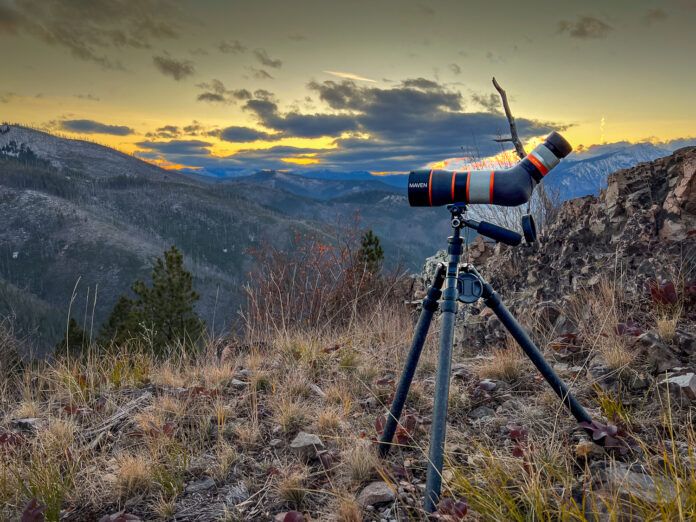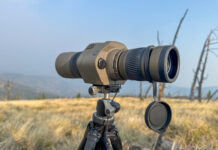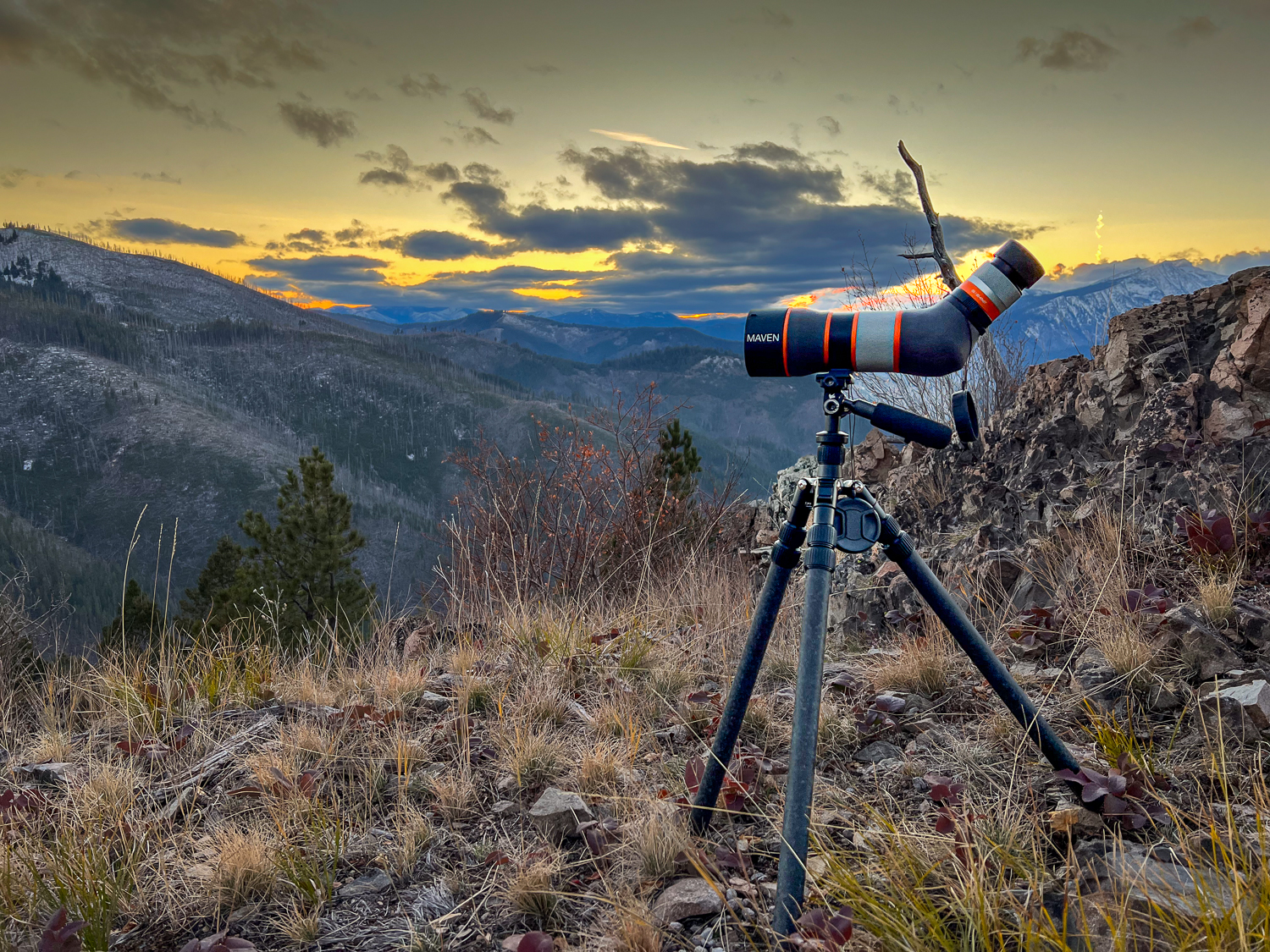
Tricer Tripod
Going through life as a certified optics nerd really leads to the realization that when it comes to high magnification, stability is the key. It really doesn’t matter how far down the resolution chart your spotting scope can resolve when the slightest breeze blurs the details. It is pretty rare for a hunter to be in completely calm conditions when they are glassing for bedded muleys, either.
Ultralight Tripods
I really don’t even know how many different tripods I have taken on hunts. I do know that most of the ultralight ones were marginal, and many were just plain bad. Like most things in optics and hunting, it soon became apparent that the “get what you pay for” truism applies to tripods, too.
The hunting market is flooded with tripods that promise ultralight specs and heavy-duty performance. Generally, though, that just doesn’t hold water. The lighter you go, the more delicate the gear.
Tricer promises to buck the trend, however, and provide great stability at ultralight weights and at a reasonable price.
Tricer Glassing System
To test this, I brought the Tricer Ad legs, Tricer LP pan head, and Tricer Bino Adapter into the woods of Western Montana with me for the last few weeks of the Montana General Season for deer and elk hunting.
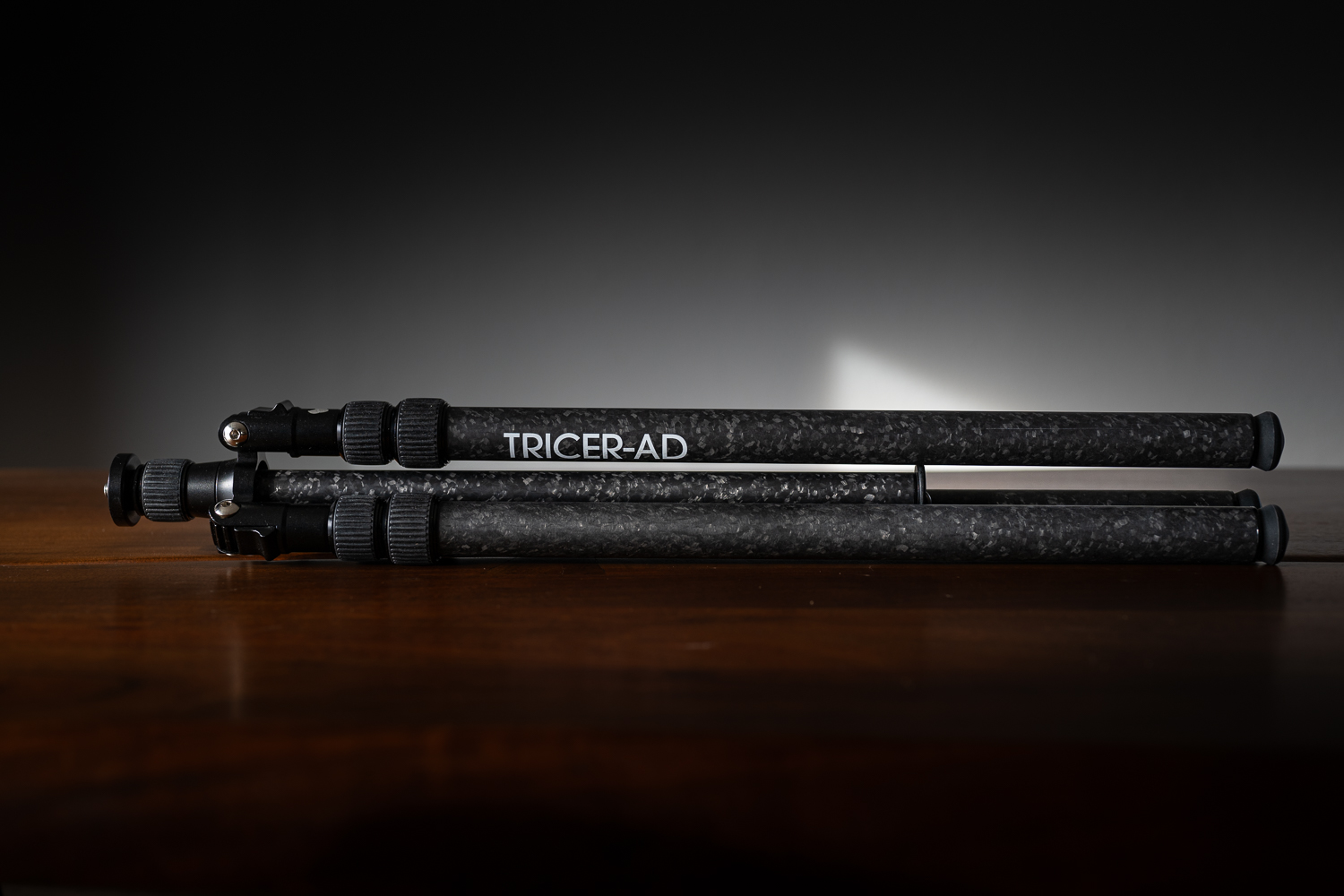
Tricer AD Tripod Legs
The Tricer AD tripod is a carbon fiber tripod with anodized aluminum joints and twist-lock leg adjustments. Two center post options are included, allowing the hunter to choose a 4-inch post for getting low to the ground (or just saving ounces) and a 16-inch post for maximizing height. This way the tripod can go just from just inches above the ground all the way up to 64 inches with the tall center post. I generally used the tripod with the small post because it was more versatile that way, and I could even use it standing with an angled spotter. I needed the taller center post to glass with mounted binoculars while standing, but I don’t end up standing and glassing much on hunts where I would take an ultralight tripod.
The interesting part about the Tricer AD is the inverted leg design. The tripod comes super compact, with the legs pointing in the direction of the mounting plate.
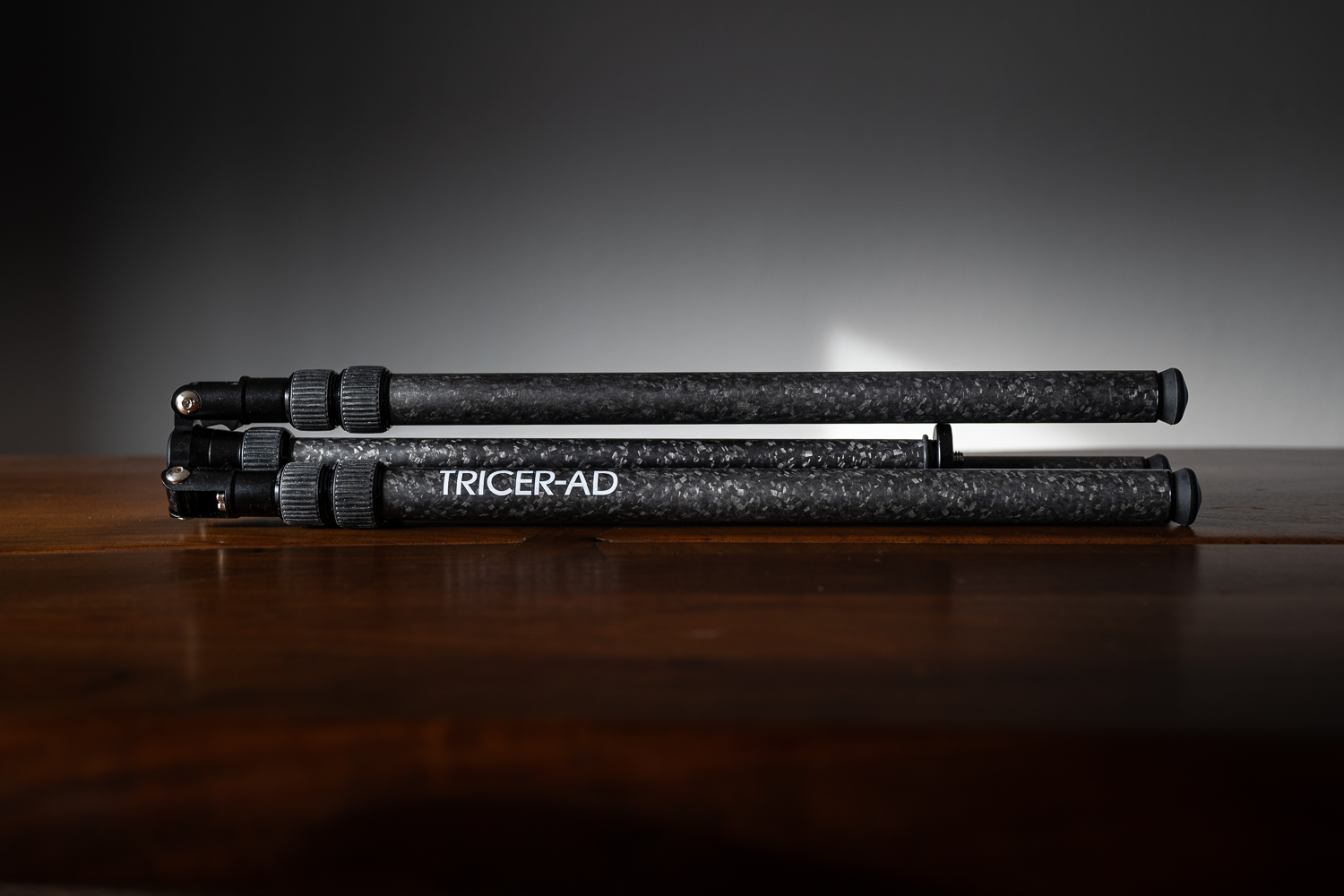
Inverted Legs
The hunter flips the legs to their inverted position for use. This does a few things. First, the larger leg sections ( 1 1/8” diameter) are closer to the ground rather than closer to the head, as with standard tripods. Second, both twist locks on the three-section legs are near the head, which makes releasing the locks for a fast setup easier.
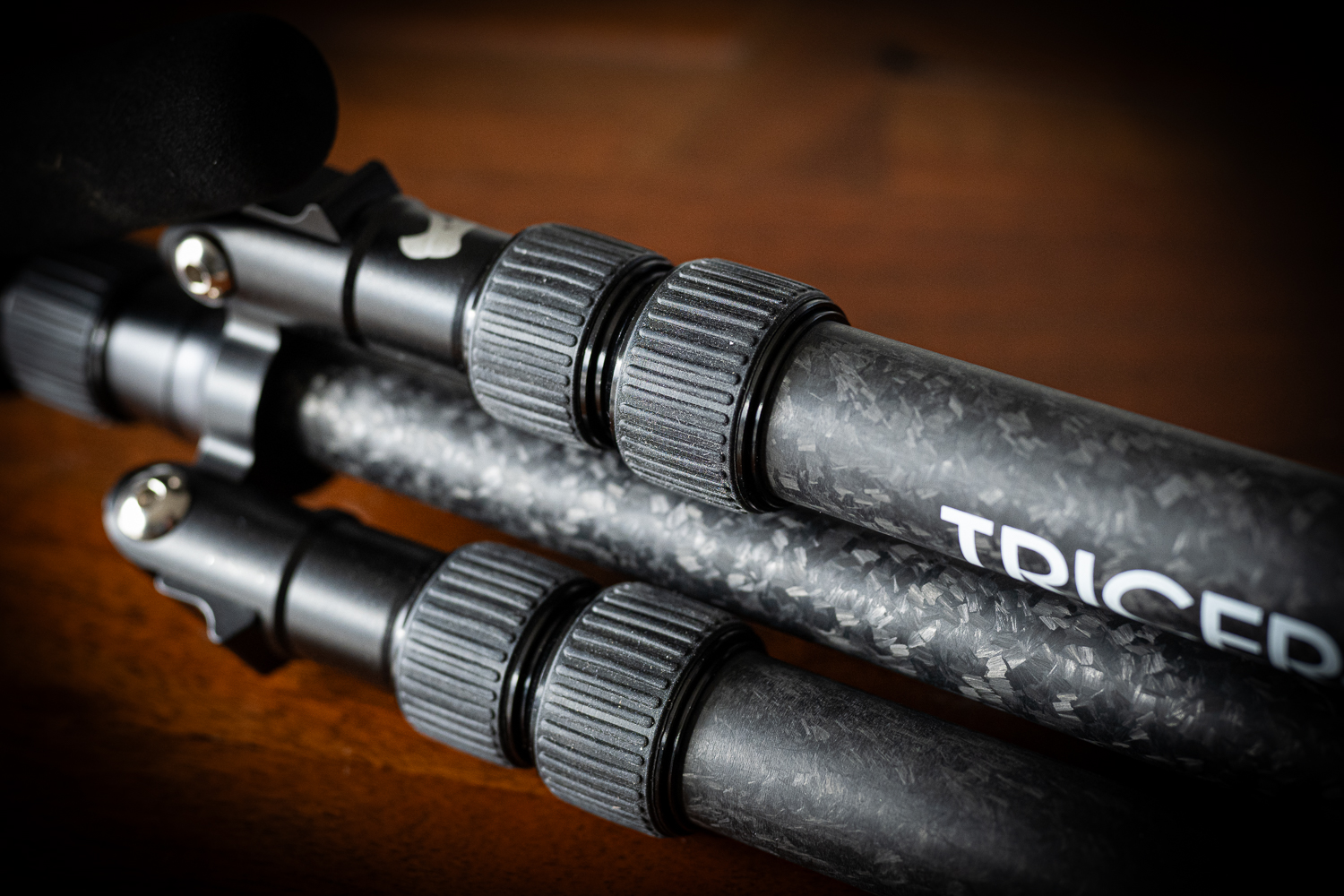
The third effect was a reversal of the twist lock direction. The twist locks loosen and tighten in the opposite direction you would expect. I frequently tried the wrong direction first before realizing my error.
The carbon legs fit very tightly together. This reduces the amount of twisting needed to get a solid lock. However, in some conditions these tight tolerances led to an unexpected issue. In cold, snowy conditions, small amounts of water from snow or condensation on the legs would get dragged between leg sections when collapsing, freeze in that position, and make it very difficult to get the legs to separate for the subsequent extension.
The legs are removable by the user, which could make a convenient home repair possible if a single leg section is damaged.
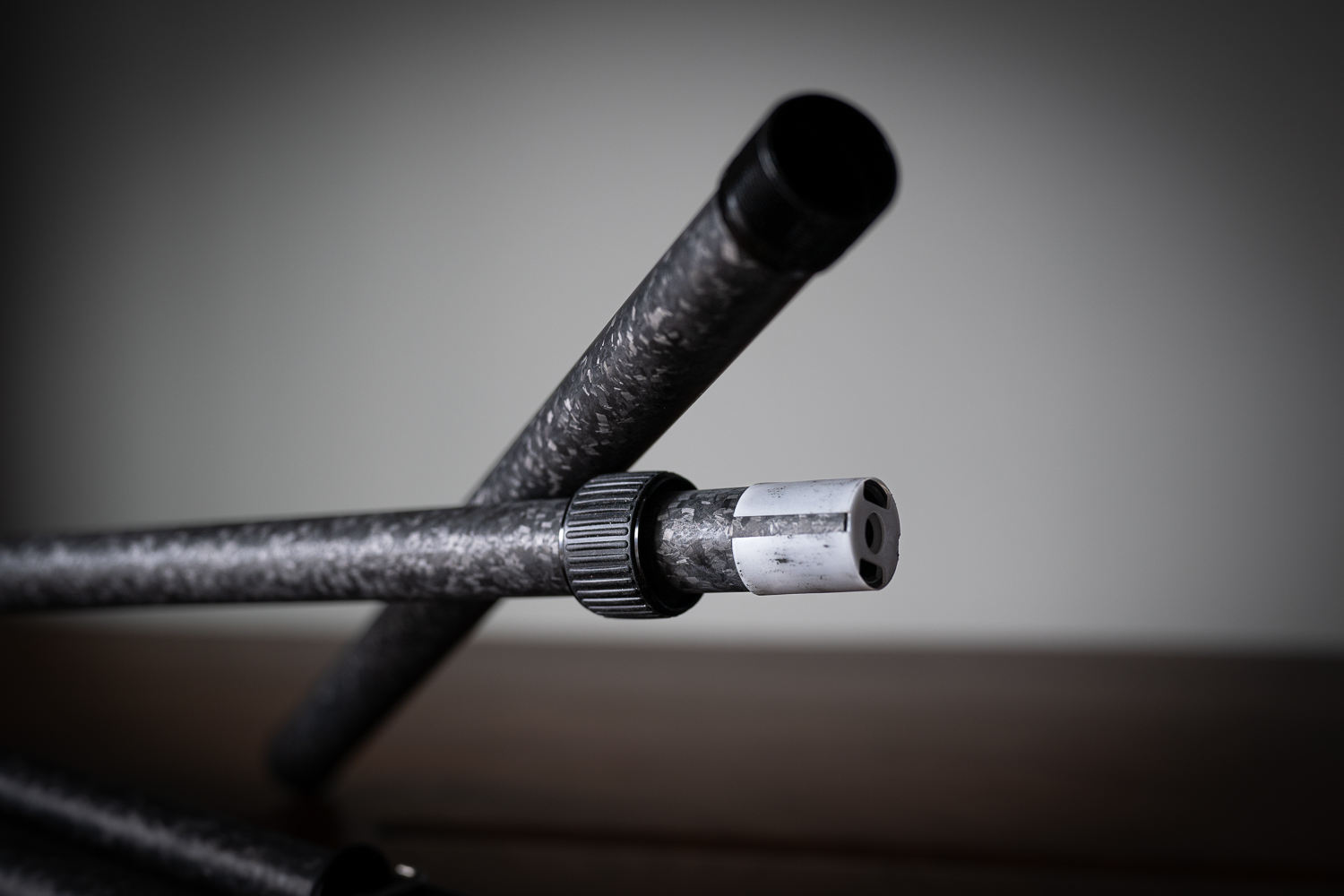
Tricer AD Weight
The Tricer AD is remarkably lightweight for a tripod that goes up to 64 inches at only 2 lbs. 1.4 ounces with the 16-inch center column and 2 lbs. .4 ounces with the 4-inch center column.
The Tricer AD feet are removable and replaceable with standard 3/8-16 threading. Aftermarket feet with that threading will work fine.
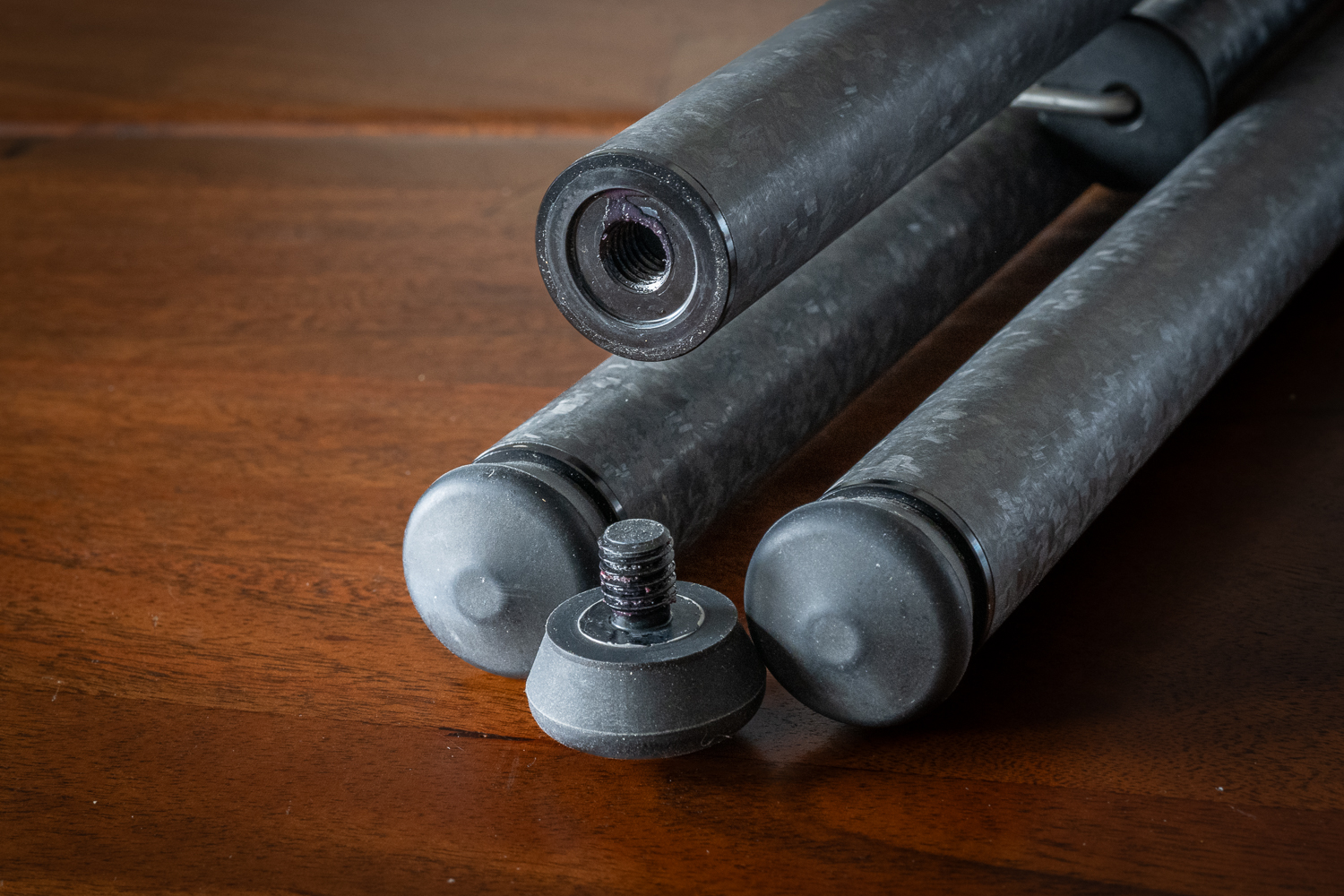
Tricer LP Pan Head
The Tricer LP is an ultralight pan/tilt head with Arca-Swiss compatibility. Tilt tension adjustments are made with the handle, while a small lever controls pan tension.
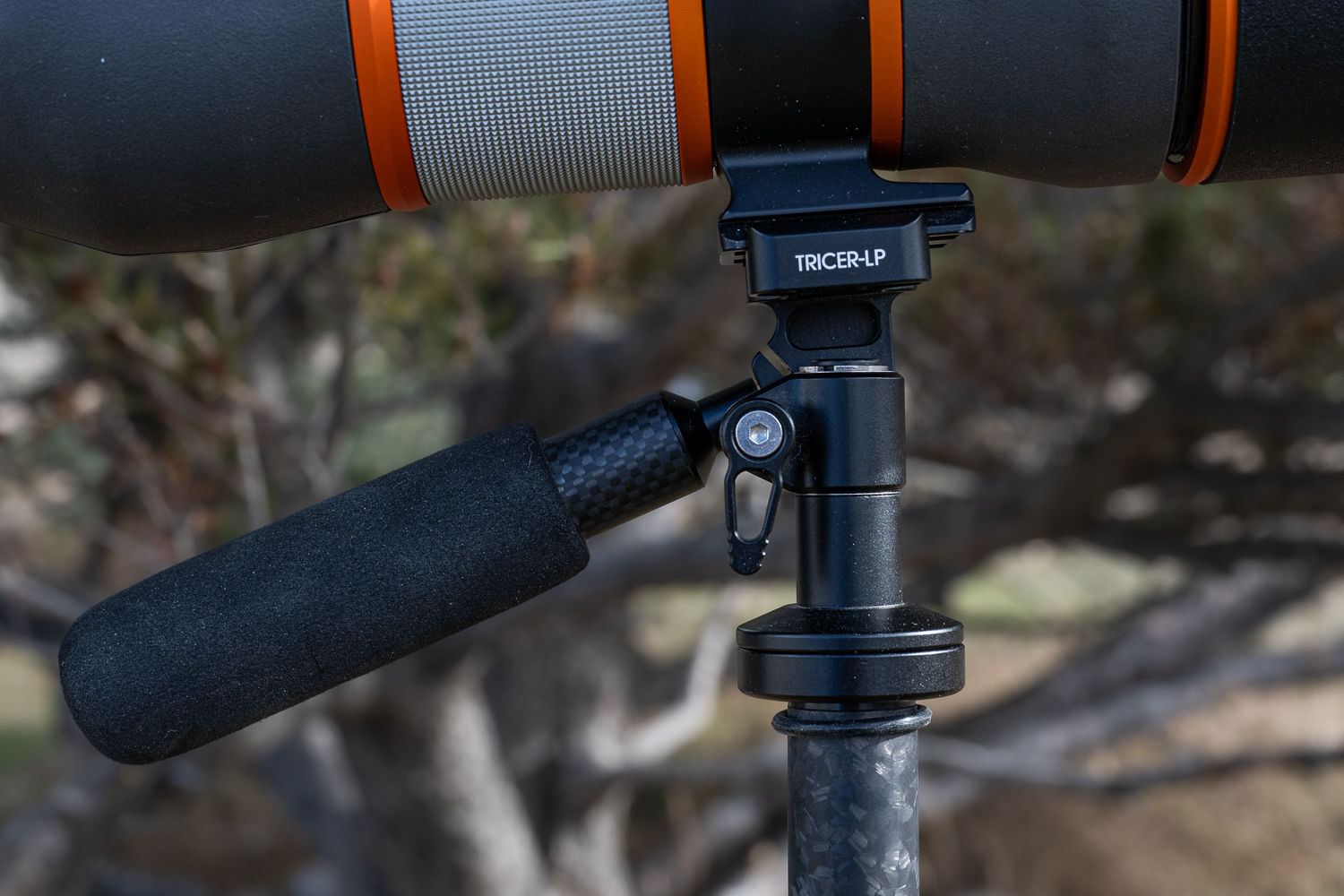
This head immediately reminded me of the Wiser Precision Nighthawk pan head I have previously reviewed. That is one of my favorite heads, and unsurprisingly, the near-twin Tricer LP performed similarly with glass-smooth panning and tilting. I had no problems stabilizing 88mm and 65mm spotters on the head. I mounted at least a dozen Arca plates from different manufacturers without issue. My preferred method of glassing was to mount the optic and adjust the pan and tilt tension until I could just move the optic by hand, and it would pan smoothly and stop firm.
Small Issue
The only issue I did have with the head was the small retaining clip on the pan adjustment lever. The clip bent and fell off in the field. After some looking, I found it and was able to use pliers to get it back in shape and on the head again. Notably, the pan tension lever still functioned without the clip.
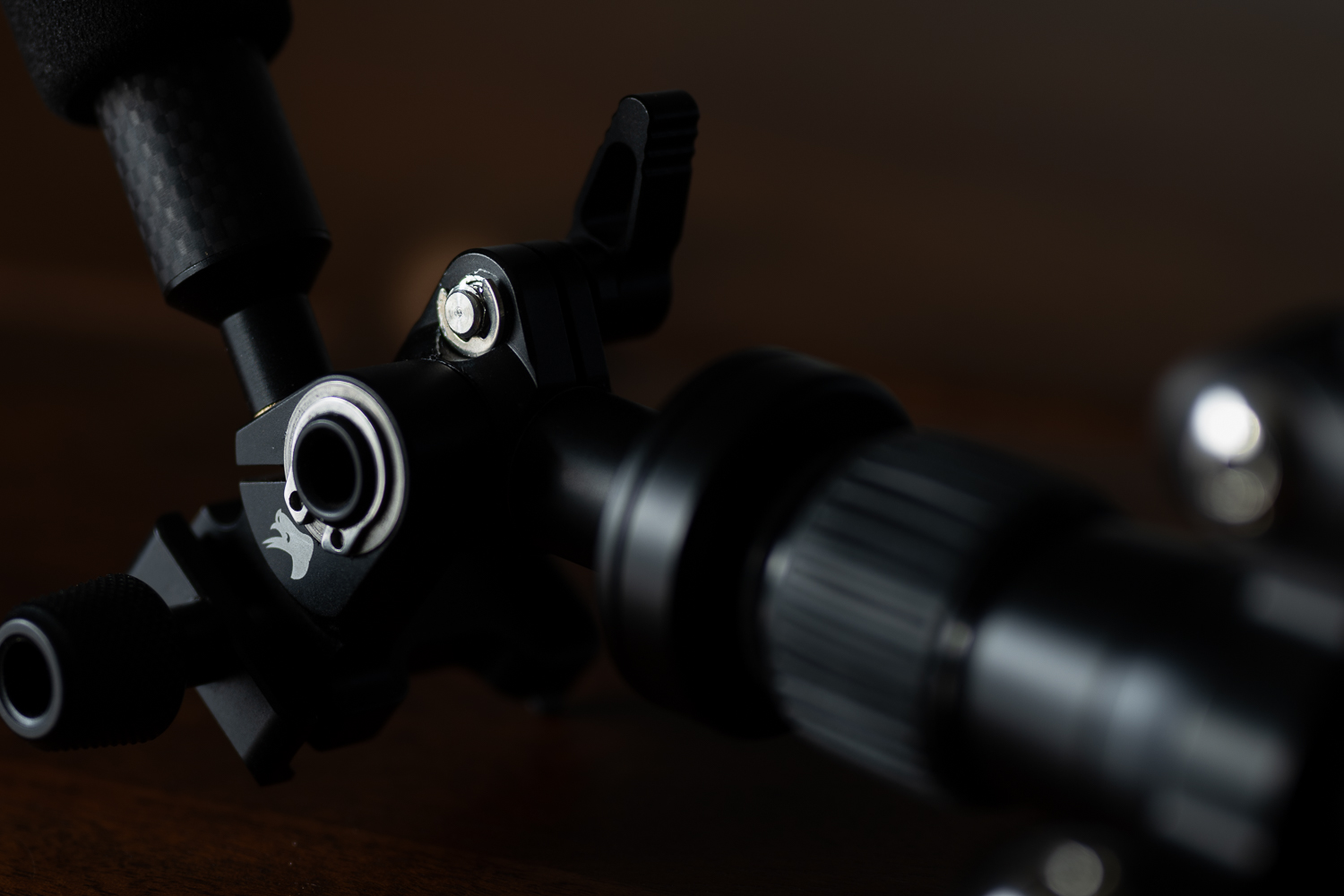
After investigating, it seemed that I may have “over-loosened” the pan lever, which squeezed the retaining clip out of position. It’s not a big problem, but one I certainly had in mind adjusting the pan tension afterward.
Tricer LP Weight
The Tricer LP is class-leading in weight. Tricer lists it at 4.5 ounces, but my sample weighed even less at 4.3 ounces on my scale. It is 1.5 ounces lighter than the Nighthawk when both have their carbon fiber handles while still .5 ounces lighter than the Nighthawk in its lightest configuration with a lever replacing the full handle.
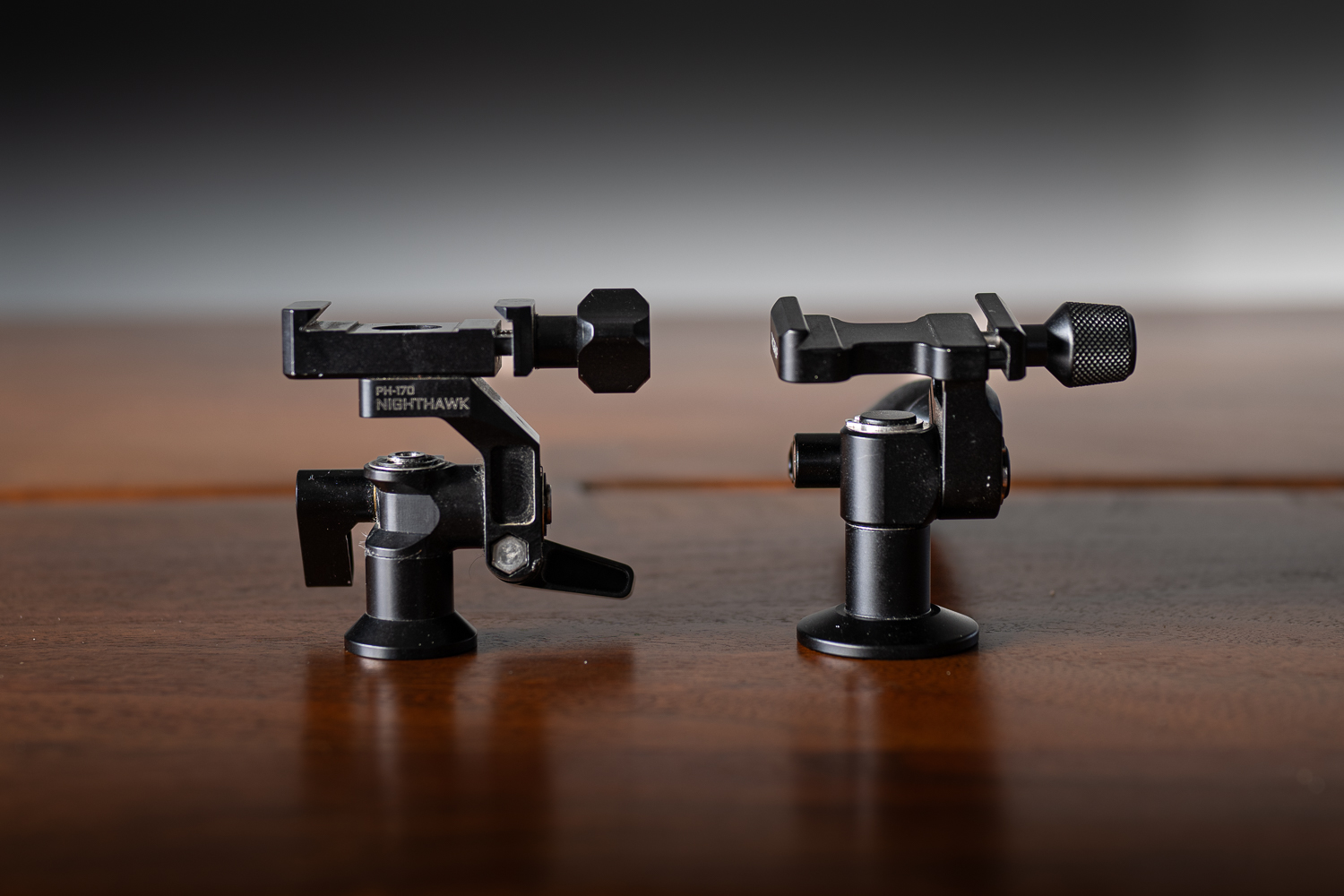
Tricer BA Binocular Adapter
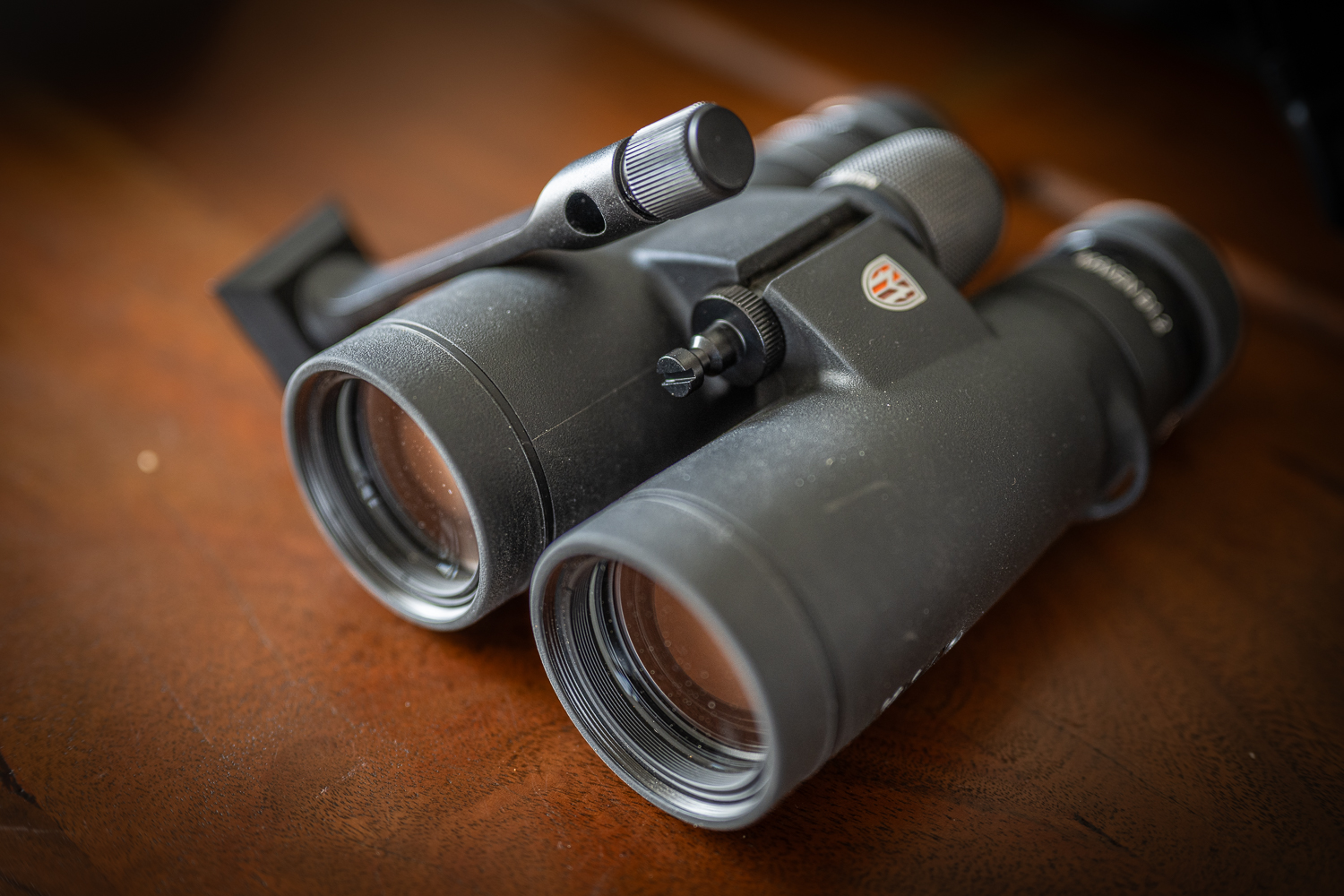
Tricer makes a simple stud-and-post style binocular adapter. The stud fits any 1/4-20 receiver on binoculars equipped with one. The stud is then simply inserted into the Tricer BA where the top knurled knob is screwed down tight to the stud. The Tricer BA has an Arca-Swiss compatible base with two retaining pins and a 1/4-20 threaded hole for attaching other adapter plates.
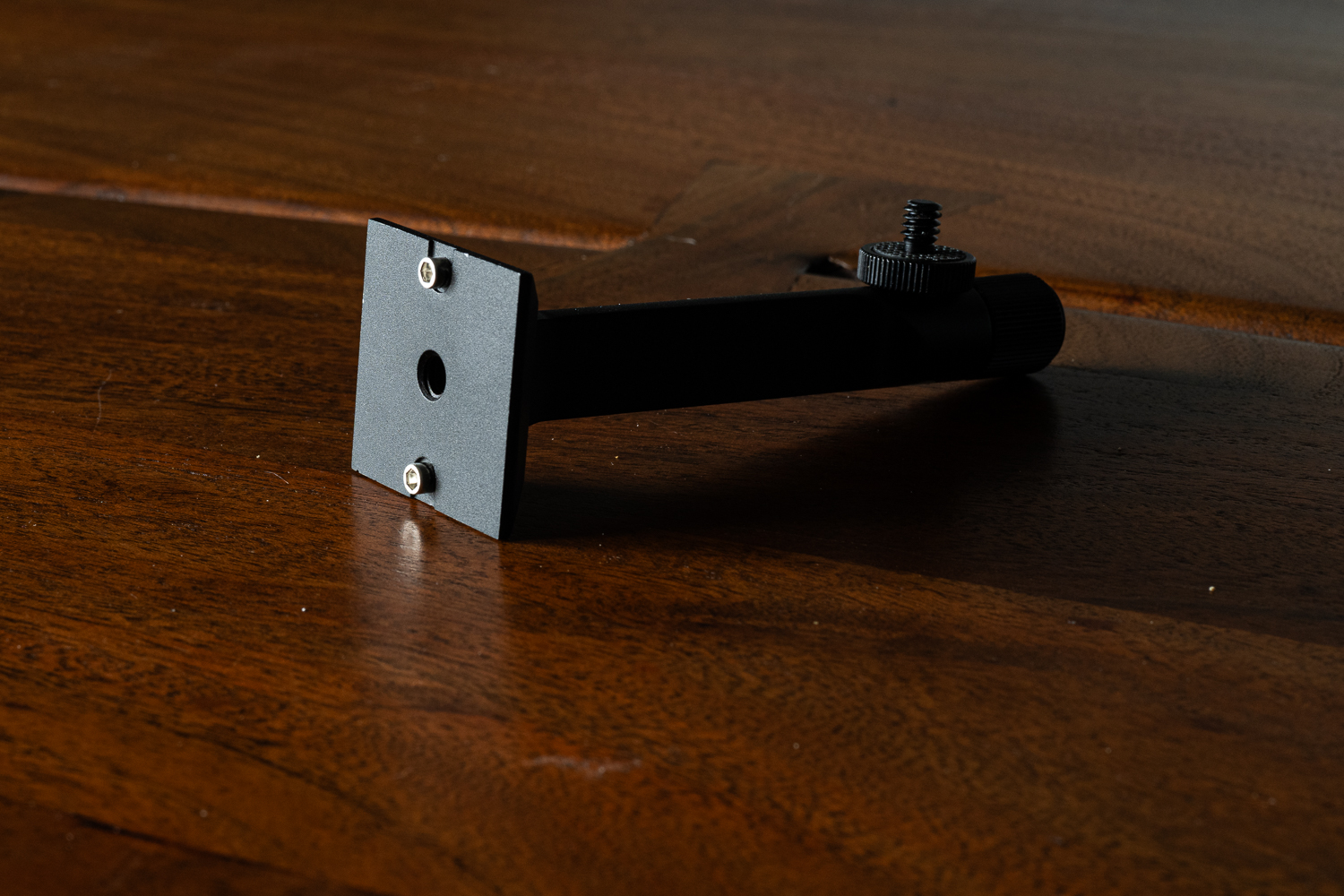
The hunter will need to remove the retaining pins to use another plate, and to use with Arca heads that aren’t cut for retaining pins.
The Tricer BA is nice and tall and so is compatible with a wide variety of optics. It is quite light also at only 2.1 ounces, 1/4-20 stud included.
The 1/4-20 studs won’t work with some of the high-end binoculars that don’t have a 1/4-20 thread receiver. Tricer does offer other adapters for Swarovski NL and EL Range binoculars, but those are the collar-type that go around one barrel and won’t work with the BA. Sadly, there is no stud option for my Zeiss RF. The Tricer BA worked great with the Maven B1.2, though!
I appreciated how tightly I could lock the binocular down with the knurled knob.
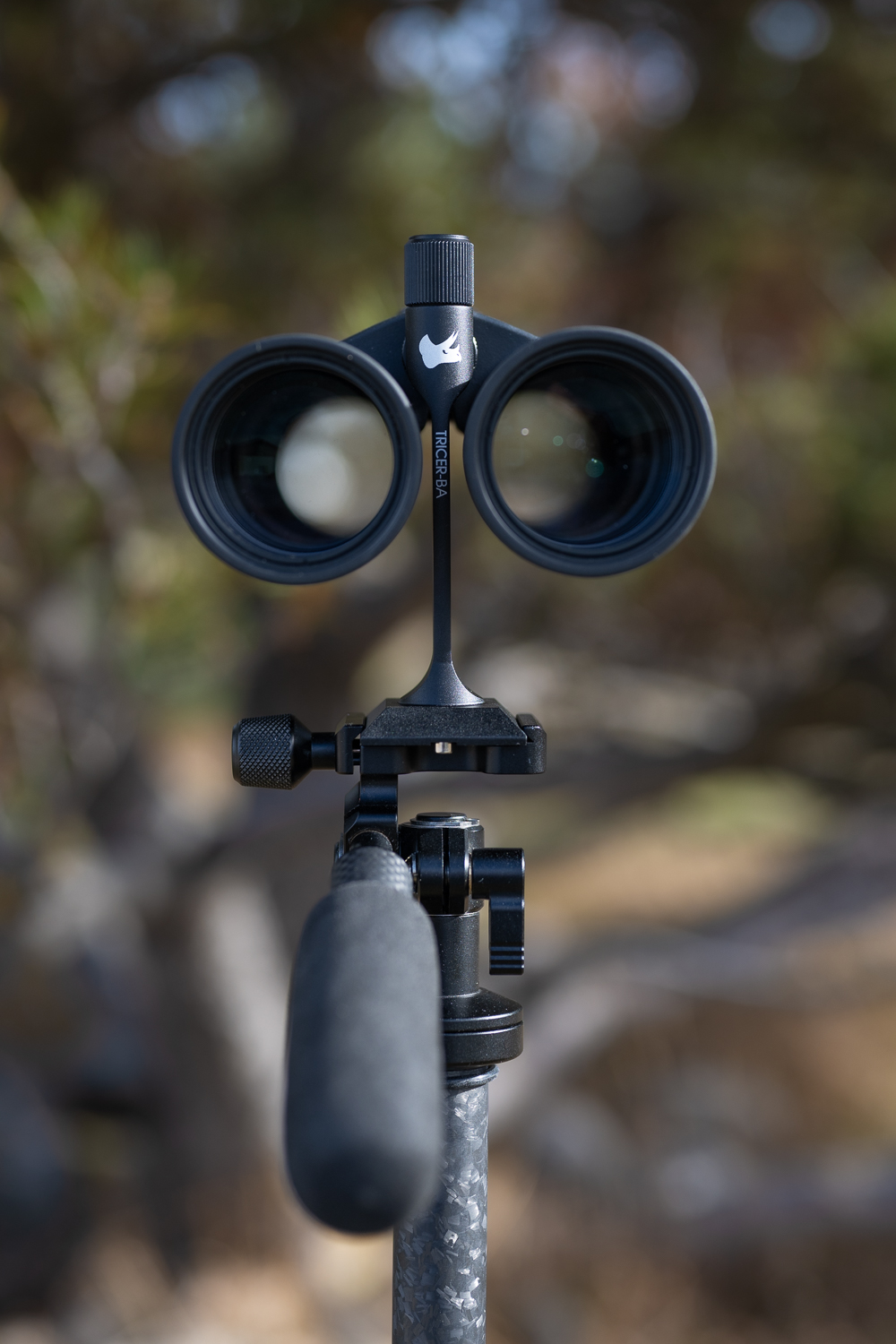
Price, Value, and Warranty
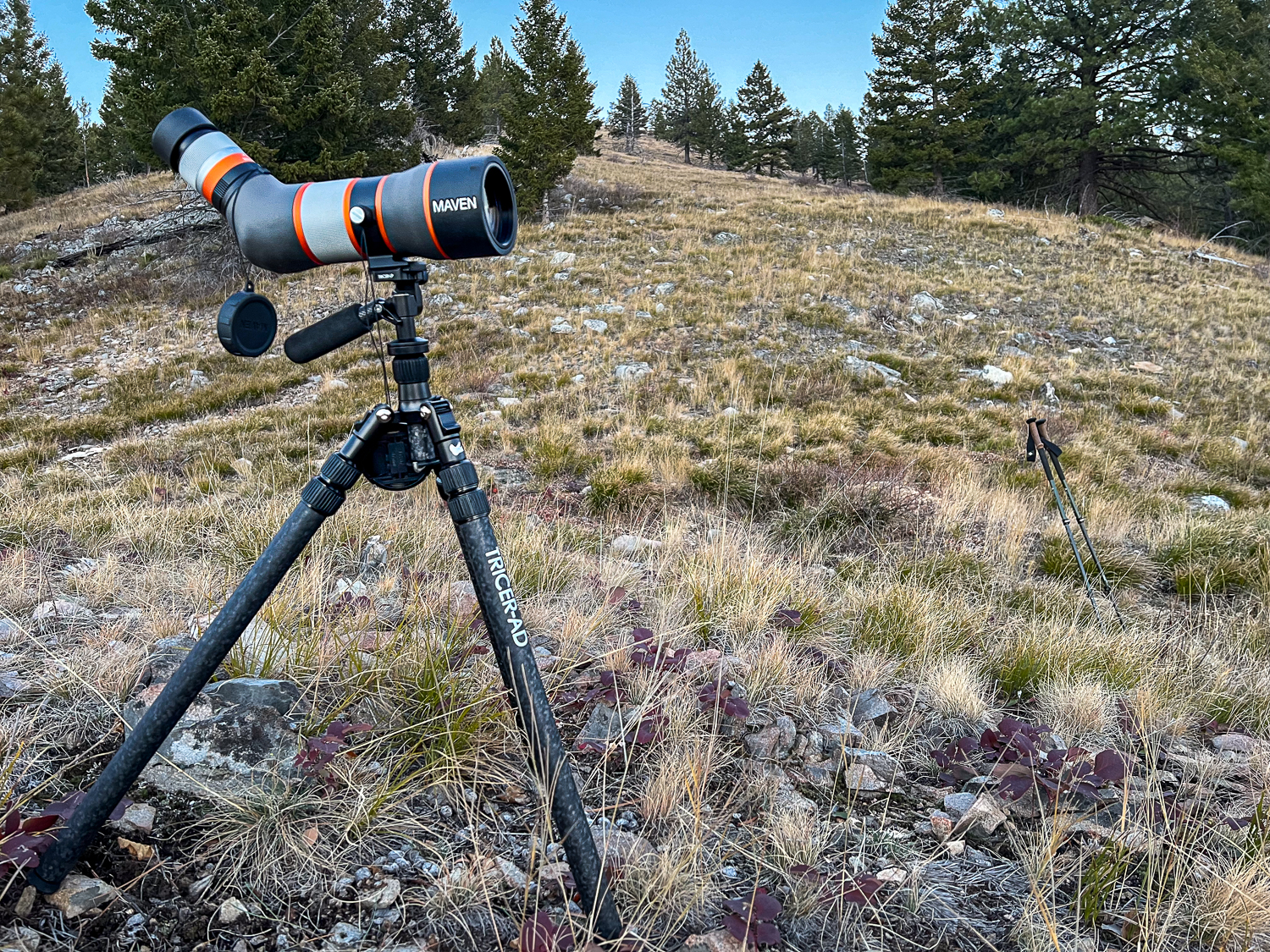
The Tricer AD, Tricer LP, and Tricer BA are all well-made products at their price points. With direct pricing of $349 for the AD, $189 for the LP, and $50 for the BA, these products undercut much of the competition. The value proposition is very high, given the features.
All three products are listed as “Designed in the USA” and “Made in China.”
According to their website, Tricer has a limited three-year warranty for defects in material or workmanship under “normal use.”
Conclusion
Tricer provides good stability solutions for hunters with the Tricer AD, Tricer LP, and Tricer BA. The weight-to-stability ratio is excellent. The Tricer AD is about as light as I want to go with tripod legs and still get the stability I need. These three products are feature-rich and well-made, especially at their price point. Hunters looking for great performance at a moderate price should take a close look at Tricer. Available here.
Comment on this review or ask Matt questions here.
Note: Tricer is a Rokslide advertiser, but review was done by an independent writer














